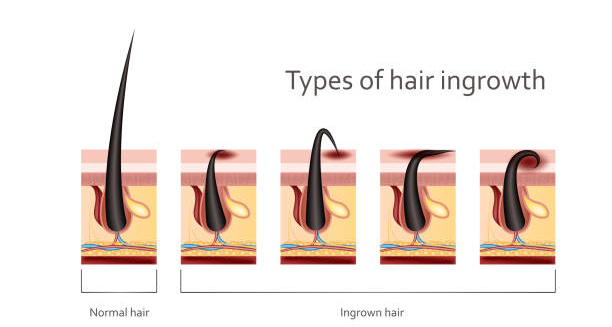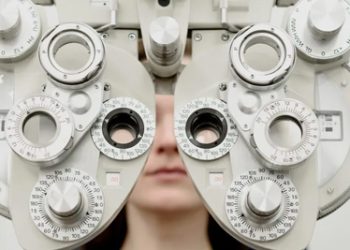Causes of ingrown hairs can vary widely depending on a person’s hair type, grooming habits, skin characteristics, and even the clothing they wear. At its core, an ingrown hair results from a disruption in the natural growth pattern of a hair strand. Instead of emerging from the follicle and growing away from the skin’s surface, the hair curves back or is forced sideways into the skin. This misdirection traps the hair beneath the epidermis, triggering inflammation and forming what we recognise as an ingrown hair. Understanding the causes of ingrown hairs is essential for effective prevention and treatment.
One of the most common causes is shaving, especially when done against the direction of hair growth or with dull blades. Shaving too closely leaves the hair with a sharp, pointed edge that easily pierces the skin as it grows back. This problem affects people with curly or coarse hair more because their hair naturally curls back toward the skin. The curlier the hair, the higher the chance it will grow back into the skin instead of outwards. Men of African or Afro-Caribbean descent are particularly prone to ingrown hairs in the beard area due to this hair type.
Waxing & Plucking
Waxing and plucking also lead to many ingrown hairs. These methods pull hair out from the root but also harm the follicle lining. When hair grows back, it may come out at an angle or from a damaged opening, increasing the chance it gets stuck under the skin. If hair breaks just below the surface, it becomes very likely to turn inward. Regular waxing can cause tiny injuries to the skin and follicles, which raises the risk of swelling and trapped hairs.
Dead skin buildup and poor exfoliation cause many ingrown hairs too. The skin sheds dead cells constantly, but when these cells pile up, they block the follicle opening. New hairs then get stuck under this layer and grow inward instead of out. This often happens in places like the underarms, legs, and bikini line where moisture, rubbing, and grooming happen more.
Tight clothing, especially in warm or humid places, makes ingrown hairs worse. Clothes that rub the skin—like leggings, synthetic underwear, or tight collars—push growing hairs back into the skin. The constant rubbing irritates the follicles and blocks the hair from coming out properly. In spots like the inner thighs, groin, or neck, sweat and heat add to the problem by causing more swelling and bacteria growth.
Shaving Techniques and Dry Skin
Poor shaving tools and bad shaving methods cause many ingrown hairs. Multi-blade razors lift hair and cut it below the skin, giving a close shave but increasing the chance that hair curls back under the skin when it grows again. Shaving without lotion, using dirty razors, or not rinsing the blade between strokes can also irritate the skin and cause tiny cuts. These problems damage the skin surface and change how hair grows.
Dry skin plays a hidden role in causing ingrown hairs. When the skin is dry, it loses flexibility and breaks easily. Hair trying to come through dry, rough skin can bend sideways and get trapped. This cycle of dry skin and blocked follicles keeps the problem going.
Genetics also influence who gets ingrown hairs. Some people naturally have curly, thick, or coarse hair that makes them prone to repeated ingrown hairs. Dry or sensitive skin adds to this risk. Even the shape of the face can affect hair angle, especially around the jawline or neck, making it more likely for hair to grow inward there.
Hormonal changes raise the risk too. People with high androgen levels, such as those with polycystic ovary syndrome (PCOS), may grow extra hair on their face or body. Faster or thicker hair growth increases the chance of hairs getting trapped, especially with hair removal methods like waxing or plucking. Men with high testosterone often have denser beards, leading to more shaving-related ingrown hairs.
Certain skin conditions also add to the problem. Eczema or keratosis pilaris change the skin’s texture and block hair growth. Inflammation, excess keratin, and uneven follicle openings stop hair from growing out normally. Constant irritation from allergies or scratching can also twist follicles and cause hair to grow inward.
Environmental and Lifestyle Factors
Jobs or environments that cause heat, sweat, or friction worsen ingrown hairs. Athletes, dancers, and workers who wear tight, synthetic clothes and move a lot face higher risks. People in tropical climates may also have more irritation and blocked follicles, especially in places that stay wet or covered for long periods.
In conclusion, the causes of ingrown hairs are many and often linked. Shaving, waxing, tight clothes, dead skin, dry skin, curly hair, and some health problems all increase the chance of hairs growing under the skin. Understanding these causes is the first step to stopping ingrown hairs. By changing how you groom, taking better care of your skin, or using medical treatments, most cases can be controlled once the causes are known.


